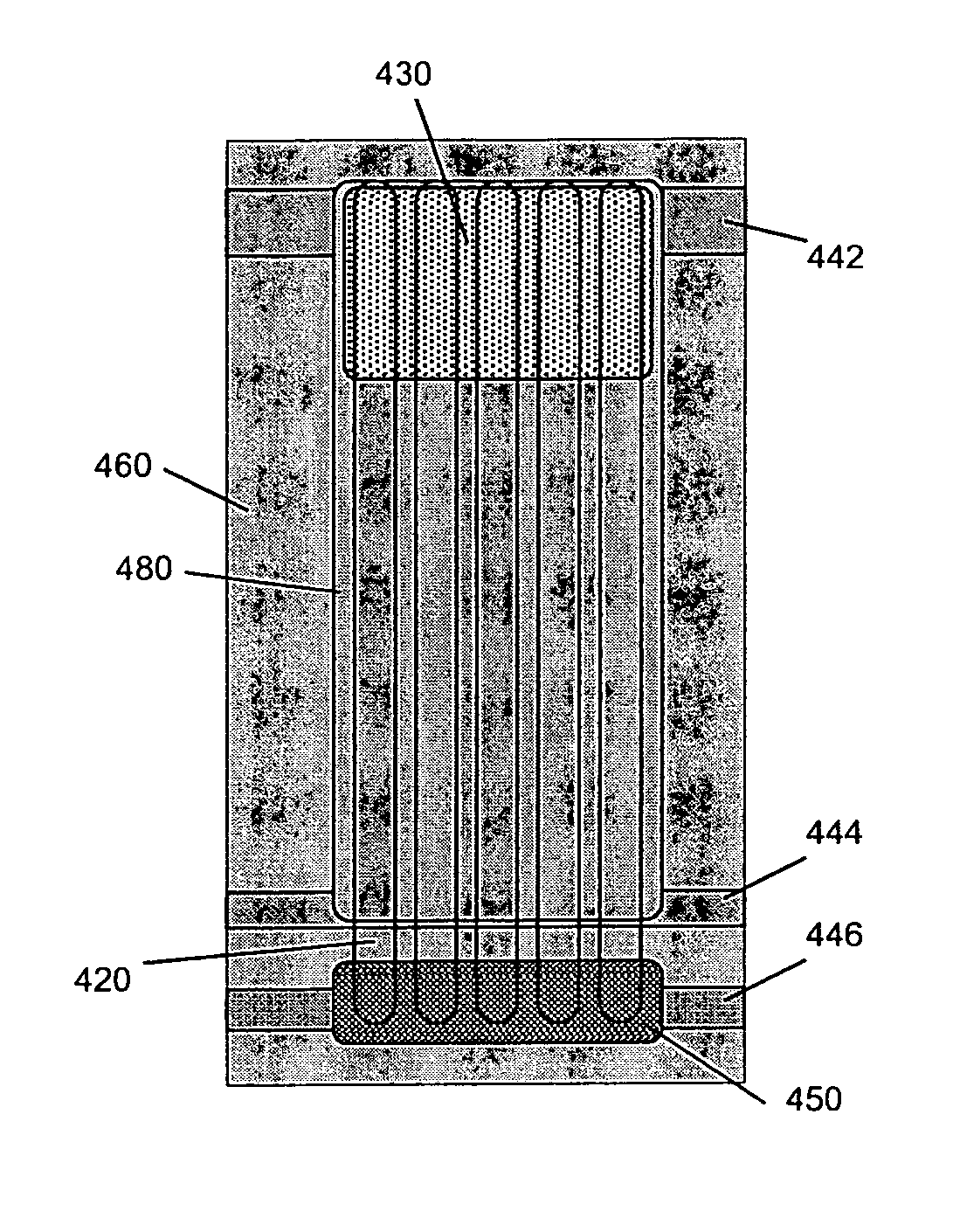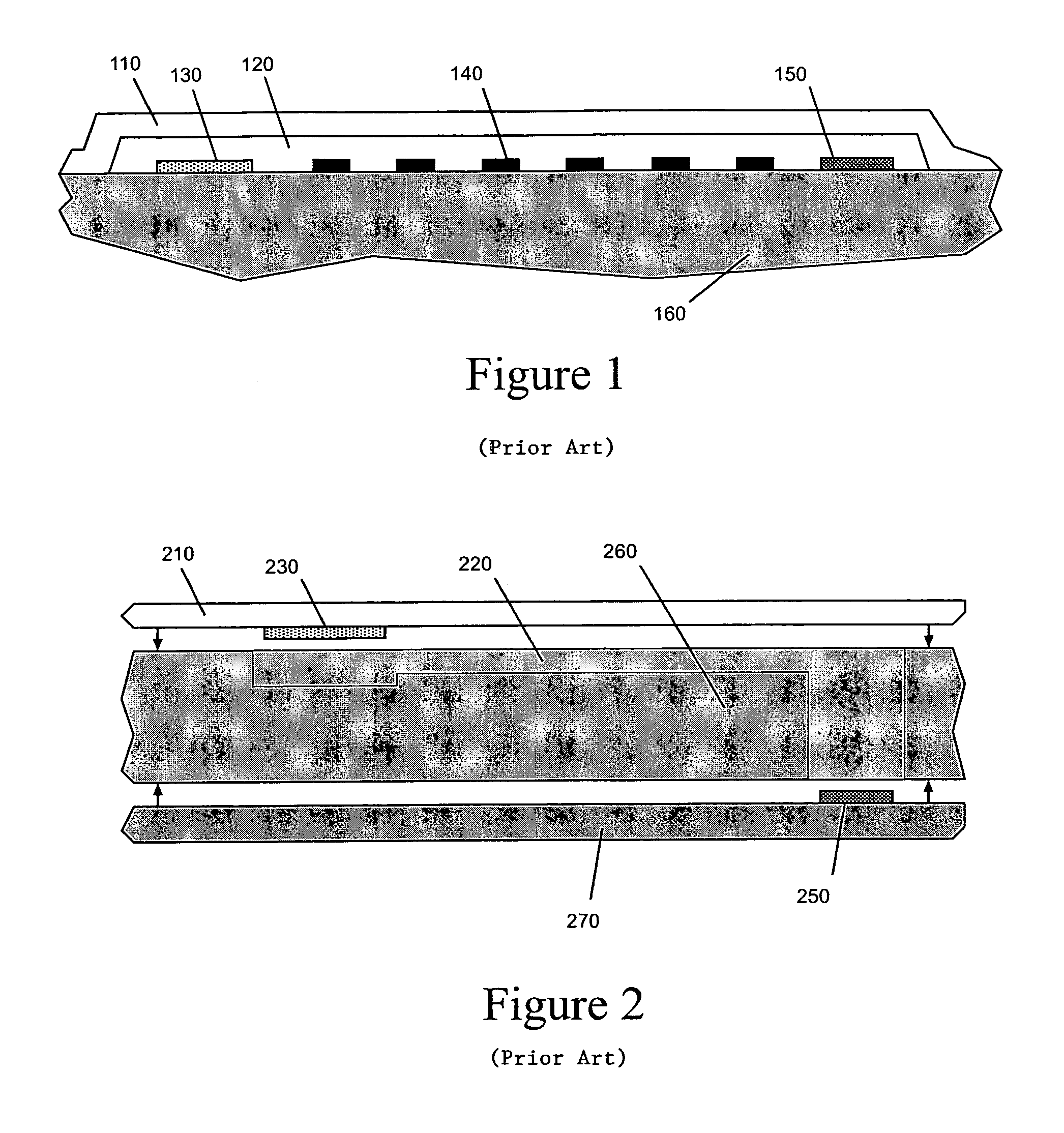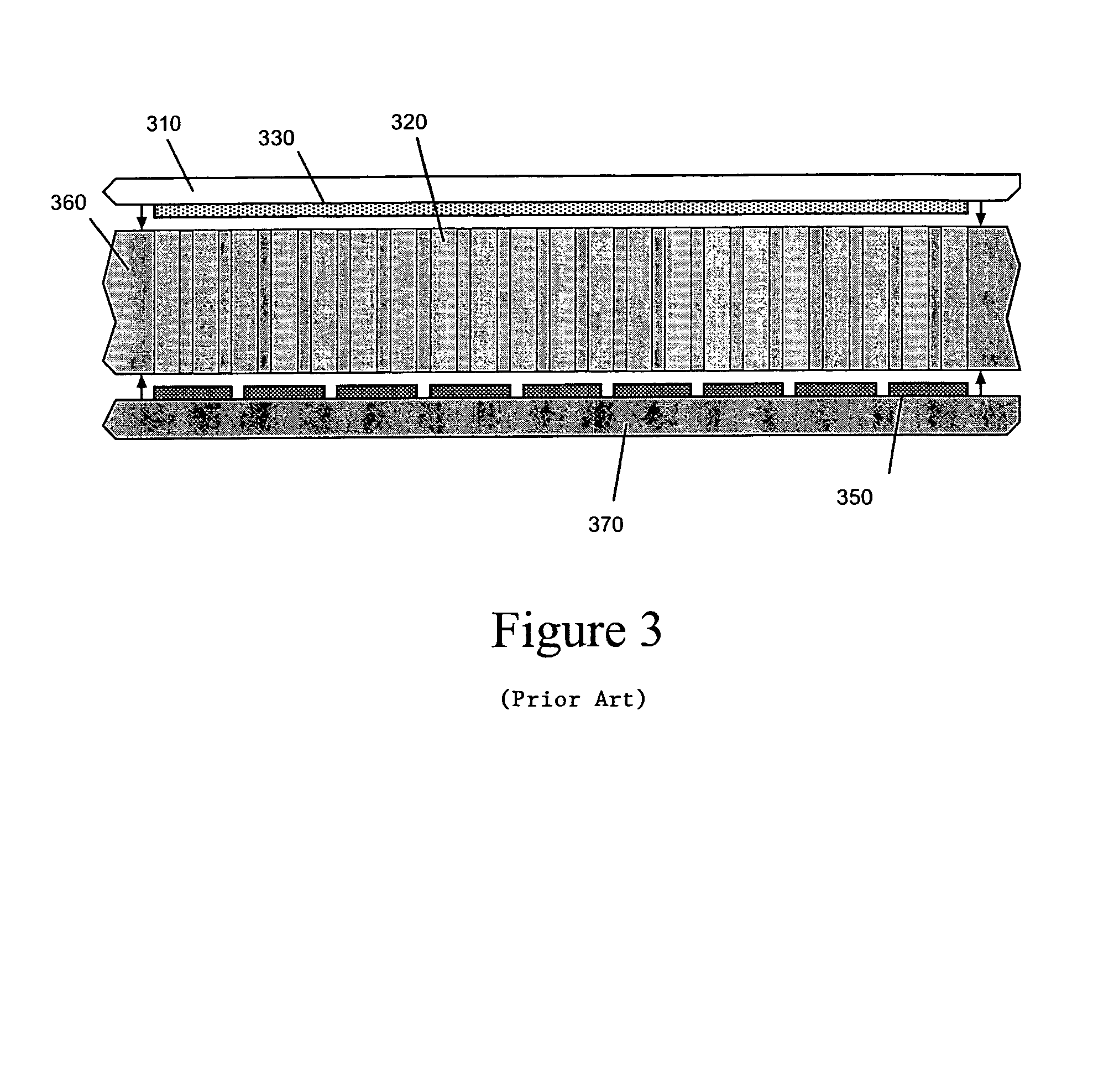Fully-integrated in-plane micro-photomultiplier
a micro-photomultiplier and fully integrated technology, applied in the direction of electron multiplier details, electron discharge tubes, electron multiplier tubes, etc., can solve the problems of dynode and cathode dynode b>110/b> collapse, timely and costly increase of cover thickness, etc., to achieve the effect of simplifying device fabrication
- Summary
- Abstract
- Description
- Claims
- Application Information
AI Technical Summary
Benefits of technology
Problems solved by technology
Method used
Image
Examples
Embodiment Construction
[0017]A planar, fully-integrated micro-photomuliplier device 400 of the invention is shown in FIGS. 4a–4c. FIG. 4a is a top view of the device showing the nanochannels 420, photocathode 430, resistive strip material 480, and buried electrical leads 442, 444 and 446. One electrical lead 442 provides a bias for the photocathode with respect to a second lead 444, which serves as the anode. The final lead 446 makes electrical contact with the signal collector 450, and provides a signal output from the device. For this device the width of the nanochannels is less than 1 micron, and their depth is at least 100 nm. In an exemplary embodiment, their width and depth are each about 200 nm, and the length is typically more than 50 times the width of the nanochannels. Only five channels are shown in the drawing, but the actual device will have tens or hundreds of channels.
[0018]A cut-away end view of the device is shown in FIG. 4b, and a cut-away side view of the device is shown in FIG. 4c. The...
PUM
 Login to View More
Login to View More Abstract
Description
Claims
Application Information
 Login to View More
Login to View More - R&D
- Intellectual Property
- Life Sciences
- Materials
- Tech Scout
- Unparalleled Data Quality
- Higher Quality Content
- 60% Fewer Hallucinations
Browse by: Latest US Patents, China's latest patents, Technical Efficacy Thesaurus, Application Domain, Technology Topic, Popular Technical Reports.
© 2025 PatSnap. All rights reserved.Legal|Privacy policy|Modern Slavery Act Transparency Statement|Sitemap|About US| Contact US: help@patsnap.com



